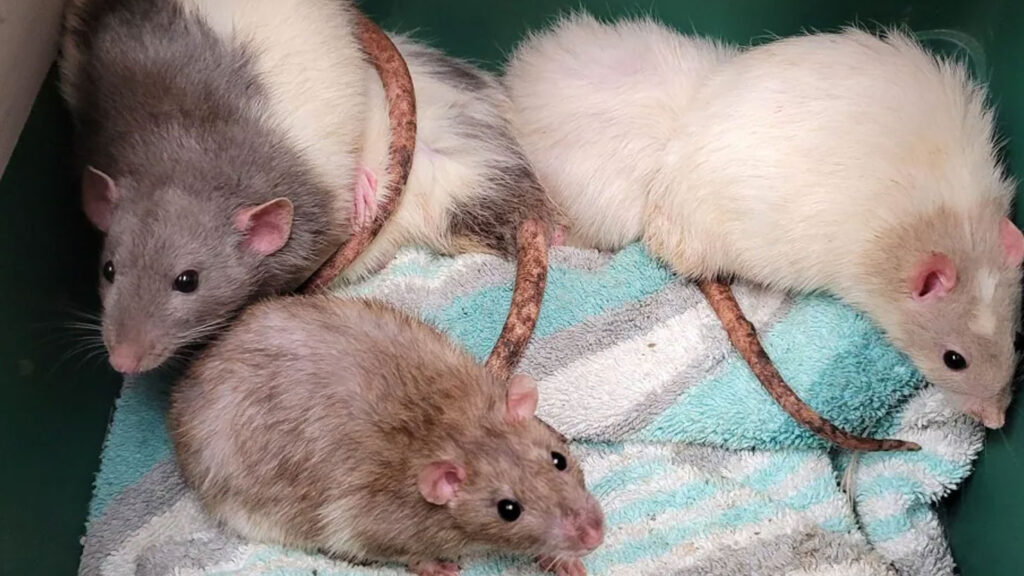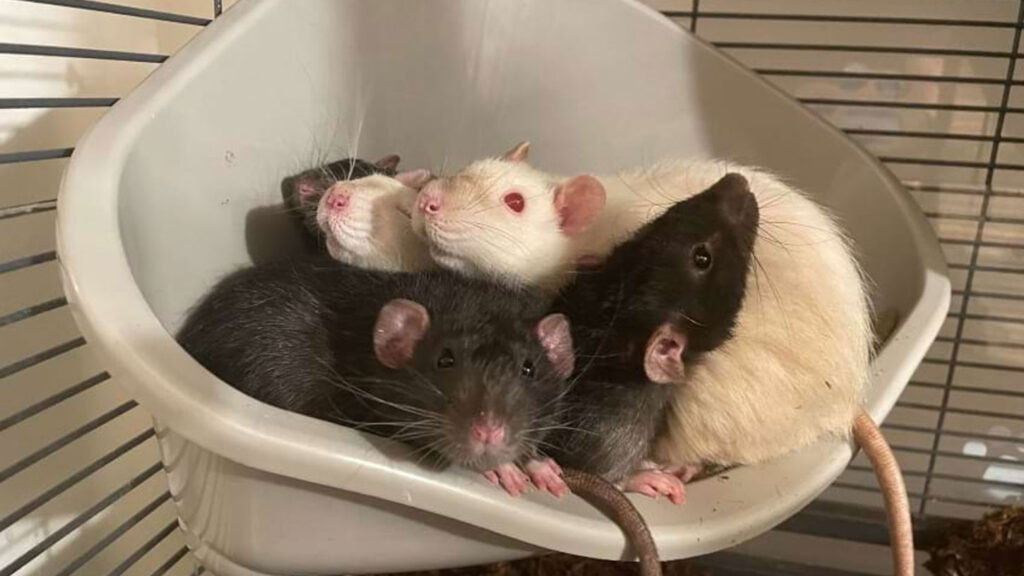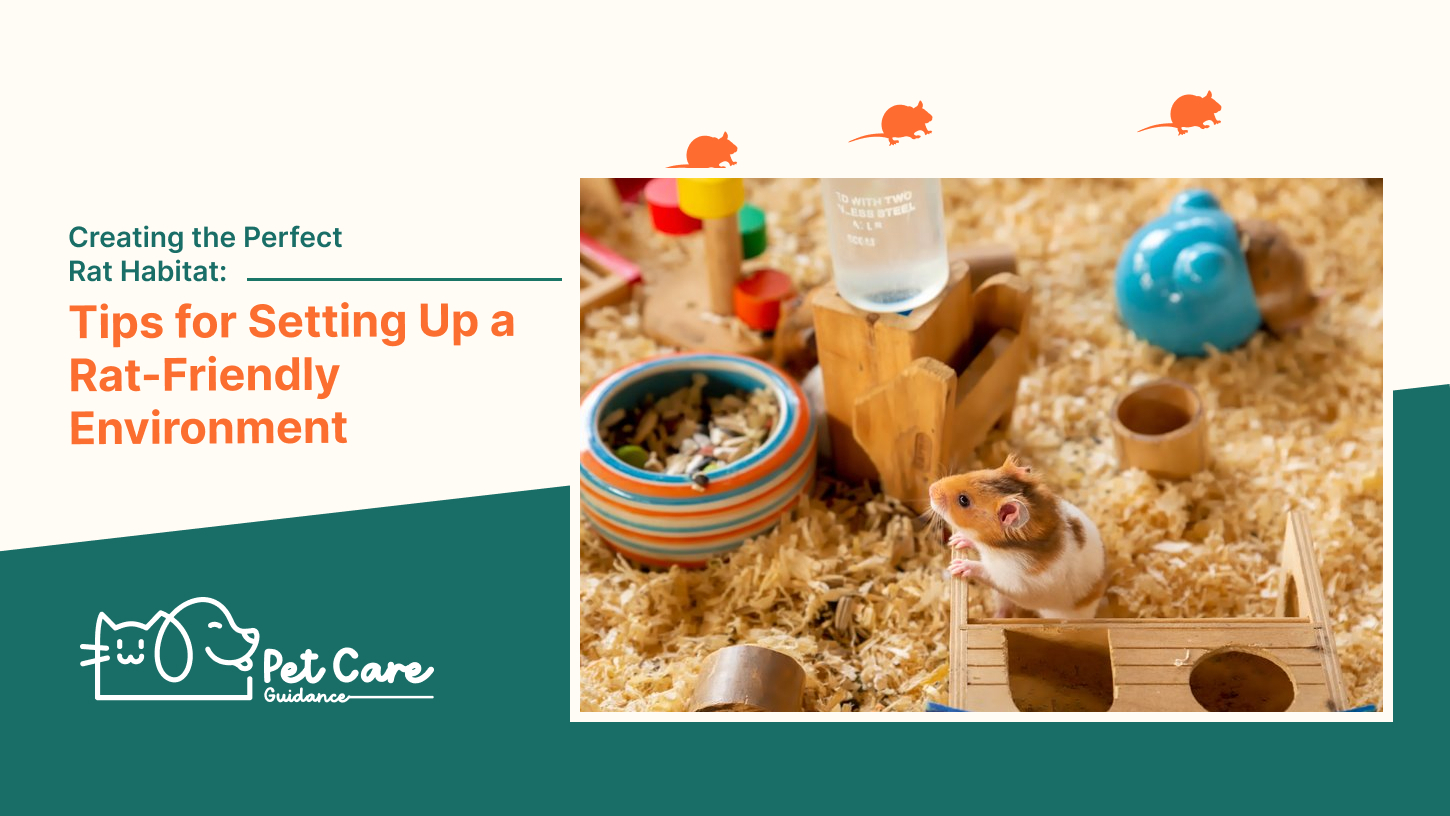Setting up a rat-friendly environment requires careful consideration of their needs for space, climbing structures, and play items. Avoid using cedar or pine chips as bedding and provide hiding spots such as igloos or flower pots.
Regular gentle interaction and treats will help establish a bond with your pet rat, making them more friendly.
Importance Of Creating An Ideal Rat Habitat
Creating an ideal rat habitat is crucial for the well-being of pet rats. A suitable environment provides numerous benefits for these small creatures. Rat-friendly habitats enable rats to exhibit their natural behaviours and feel safe and secure. It allows them to explore, climb, and play, promoting their physical and mental stimulation.
When setting up a rat habitat, it is important to provide plenty of room for rats to move around and explore. Rat-sized tubes, ropes, and cloth tunnels are ideal for them to climb on and play with. They also enjoy digging, so providing digging opportunities can be beneficial.
Lining the cage with appropriate bedding is essential, avoiding the use of cedar or pine chips that can be harmful to rats. Additionally, rats need a place to hide and sleep, such as an igloo, flower pot, or shoebox. Incorporating these elements into the rat habitat will ensure a comfortable and enriching living space for these intelligent and social animals.
Choosing The Right Cage
Choosing the right cage is crucial when setting up a rat-friendly environment. When selecting a rat cage, there are a few factors to consider. One essential factor is the size and spacing requirements for a comfortable living space. Rats are very active creatures and need plenty of room to explore, climb, and play.
Rat-sized tubes, ropes, and cloth tunnels are ideal for providing them with opportunities for exercise and enrichment. Additionally, rats love to dig and explore new smells, so incorporating materials like soil or digging boxes can help stimulate their natural instincts.
It’s important to ensure that the cage provides enough space for them to move around comfortably and engage in their natural behaviours. By considering these factors, you can create the perfect rat habitat that promotes their well-being and happiness.

Creating A Cozy And Comfortable Bedding
When creating a cosy and comfortable bedding for your rats, it is important to consider their safety and comfort. Choosing the right bedding options for your rats is crucial for maintaining their health and well-being. Avoid using bedding materials that contain cedar or pine chips, as these contain oils that can be harmful to rats.
Instead, opt for safe and comfortable bedding options such as paper-based bedding, aspen shavings, or fleece liners. These materials provide a soft and comfortable surface for your rats to sleep and play on.
In addition to choosing the right bedding material, it is also important to provide your rats with enough bedding to create a cosy nest. Rats love to burrow and create tunnels, so providing them with an ample amount of bedding will allow them to engage in this natural behaviour.
Ensure that the bedding is deep enough to allow them to burrow, but also make sure to regularly clean and replace the bedding to maintain a clean and hygienic habitat.
Creating a cosy and comfortable bedding for your rats is essential for their overall well-being. By providing them with safe and comfortable bedding options and allowing them to engage in natural behaviours, you can ensure that they have a happy and healthy environment to thrive in.
Promoting Activity And Play
Creating the perfect rat habitat involves promoting activity and play to keep rats engaged and active. Essential accessories to achieve this include toys and foraging opportunities.
Toys play a crucial role in stimulating rats and providing them with enrichment. Rat-sized tubes, ropes, and cloth tunnels are ideal for climbing and exploration. Drainpipes can be used for the rats to play in and run through, satisfying their natural instincts.
Foraging opportunities are important for mental stimulation. You can create a foraging environment by hiding treats or food in safe places around the cage. This encourages rats to use their natural hunting instincts and keeps them mentally stimulated.
Designing A Restful Sleep Area
When it comes to designing a restful sleep area for your rats, it’s important to create a space where they can relax and sleep peacefully. One essential accessory for their sleep area is a hammock. Hammocks provide a cosy and comfortable spot for rats to rest, and they will often spend a lot of their sleeping time in hammocks.
Other sleep accessories such as cosy beds, blankets, or igloos can also be added to their habitat to provide additional comfort. Make sure to place these accessories in a quiet and secluded part of the cage to provide a sense of security for your rats. Lastly, rats love to climb and explore, so adding ladders or ramps to their sleep area can provide extra entertainment and exercise.
Promoting Climbing And Exploration
When creating a rat-friendly environment, it’s important to promote climbing and exploration. Rats are highly active animals and providing them with vertical spaces to climb and explore is essential for their well-being. Adding structures such as ropes, cloth tunnels, and rat-sized tubes can enhance their climbing experience.
Drainpipes are also great options for rats to play in and run through. These spaces allow rats to engage in natural behaviours, such as digging and exploring new smells. Additionally, providing hiding spots and comfortable sleeping areas, such as hammocks, branches, and igloos, is crucial.
Avoid using cedar or pine chips as bedding, as these contain oils that are harmful to rats. By creating a rat habitat that promotes climbing and exploration, you are ensuring a happy and healthy environment for your pet.

Maintaining Hygiene Litter Tray And Clean-Up
A clean and hygienic rat habitat is crucial for the health and well-being of your pet. It not only helps prevent the spread of diseases but also ensures a comfortable living environment for your furry friend. One of the main aspects of maintaining hygiene in a rat habitat is by setting up a litter tray and implementing a regular clean-up routine.
When it comes to setting up a litter tray, choose one that is large enough for your rats to comfortably use. Line the tray with a suitable litter material, such as paper-based bedding or pelleted litter, and place it in a convenient location within the cage. Encourage your rats to use the litter tray by regularly placing their droppings inside.
Regularly clean the litter tray by removing any soiled litter and replacing it with fresh bedding. Clean the tray thoroughly at least once a week, using a pet-safe disinfectant. Ensure that the litter tray is completely dry before adding fresh bedding.
In addition to the litter tray, it’s important to regularly clean the entire cage, including the floors, ramps, and accessories. Remove any uneaten food, dirty bedding, and droppings on a daily basis. Wipe down the cage with a pet-safe disinfectant and allow it to air dry before returning your rats to their habitat.
Food And Water Station
When setting up a rat habitat, it is important to create a dedicated area for your rat’s food and water. This will help promote cleanliness and make it easier for you to monitor their intake. When choosing suitable food and water dispensers, consider the size of your rat and their eating habits.
Opt for sturdy and chew-proof containers that can’t easily be tipped over. You can use ceramic bowls or attach water bottles to the side of the cage for water. For food, small bowls or scatter feeders work well. Make sure to clean and refill these stations regularly to ensure your rat has access to fresh and clean food and water.
Incorporating Natural Elements
Incorporating natural elements into a rat habitat can create a more enriching environment for these small pets. Adding soil, plants, and logs can mimic the outdoors and provide opportunities for rats to explore and engage in their natural behaviours.
Soil can be used to create digging areas for rats, allowing them to satisfy their instinct to burrow. Providing live plants not only adds visual interest to the habitat but also offers rats a chance to interact with and nibble on foliage. Logs can be used as climbing structures, giving rats opportunities for exercise and exploration.
These natural elements can be incorporated into the rat habitat in various ways. For example, a shallow dish filled with soil can be placed in a corner of the cage, or potted plants can be strategically positioned to create hiding spots and encourage foraging behaviours. Logs can be securely attached to the sides of the cage or arranged to form a miniature obstacle course.
Preventing Loneliness: Adding Rat Companions
When it comes to preventing loneliness in rats, it is important to understand why rats should not be housed alone. Rats are highly social animals, and they thrive when they have companionship. Keeping a rat alone can lead to boredom, depression, and a decline in overall well-being.
If you are considering adding new rats to the habitat, there are a few considerations to keep in mind. It is crucial to introduce new rats slowly and properly. This can help to prevent territorial aggression and ensure a smooth transition for all rats involved. Additionally, it is important to provide enough space and resources for each rat, including separate sleeping areas, food bowls, and toys.
By creating a rat-friendly environment with companionship and careful introductions, you can help your rats live happy and fulfilled lives.
Frequently Asked Questions Of Creating The Perfect Rat Habitat: Tips For Setting Up A Rat-Friendly Environment
How Do You Set Up A Rat Habitat?
To set up a rat habitat:
1. Provide ample space for them to explore, with tubes, ropes, and cloth tunnels.
2. Include items for climbing and playing, such as branches and drainpipes.
3. Line the cage with safe bedding, avoiding cedar or pine chips.
4. Give them hiding and sleeping spots like igloos or shoeboxes.
5. Build a bond with regular gentle contact and treats to make them more friendly.
What Is The Best Setup For A Rat?
To set up the best rat habitat, provide plenty of room for them to explore and play. Rat-sized tubes, ropes, and cloth tunnels are great for climbing. They also love drainpipes and digging. Line the cage with safe bedding, and avoid cedar or pine chips.
Add hammocks, branches, and a hiding place like an igloo or shoebox. Bond with your rat by providing gentle contact and treats.
What Should Rats Have In Their Cage?
Rats should have bedding, but avoid cedar or pine chips. They also need things to climb on, like ropes and branches. Provide a hiding/sleeping spot, such as an igloo or shoebox. Offer them treats to bond and play with them regularly.
How Can I Make My Pet Rat More Friendly?
To make your pet rat more friendly, have regular gentle contact, let them investigate your hands and reward them with treats. Rats enjoy playing, so engage in interactive play sessions. Provide a spacious cage with climbing structures, tunnels, and hiding spots.
Avoid cedar or pine bedding.
Conclusion
Creating the perfect rat habitat is crucial for the well-being and happiness of your furry friend. By providing them with a spacious cage, rat-friendly toys, and comfortable bedding, you can ensure that they have a stimulating environment to explore and enjoy.
Additionally, incorporating hiding spots and cosy resting areas will make them feel safe and secure. Remember to avoid using cedar or pine chips for bedding and instead opt for safer alternatives. By following these tips, you can create the perfect rat habitat and provide your little companions with a comfortable and enriching home they will love.


